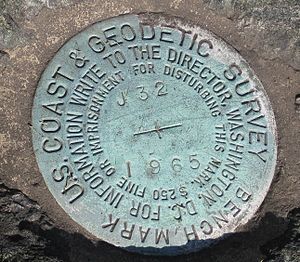How Many Coins Fit in A Ziploc® Bag?
How Many Coins Fit in A Ziploc® Bag?
Benchmarks
A benchmark is a small part of a whole used to help estimate the whole or a standard by which other things are judged. The word is believed to come from using a mark on a bench to estimate the length of things or from the surveyor’s mark, a line used to form a bench-like angle.
Materials
- Pint-sized Ziploc bag
- Quart-sized Ziploc bag
- Gallon-sized Ziploc bag
- Coins (or buttons or sand or water)
- Paper and pencil
- Optional: a quart and a gallon of milk
Instructions
- Fill up the pint-sized Ziploc bag with coins
- Estimate how many coins it will take to fill the quart-sized bag.
- Write down the estimate.
- Estimate how many coins it will take to fill the gallon-sized bag
- Write down the estimate.
- Fill the quart-sized bag. Count the coins. Compare to your estimate.
- Fill the gallon-sized bag. Count the coins. Compare to your estimate
- Optional: estimate how many quarts are in a gallon of milk. Then fill the quart container with water, pour it in to the gallon container, and keep filling and pouring until the gallon is full. Compare to your estimate.
What Should Happen?
Your grandchildren will improve their estimating ability with practice. They will also start looking for other things to estimate using a benchmark.
Is a quart of milk or water the same volume as a coffee pot?
How many quarts of milk or water would fit into your largest baking pan?
How many would it take to fill your trash can?
If you counted the number of bricks in a small square on a wall, could you use this as a benchmark to estimate how many bricks are in the entire wall?
If you counted the number of flowers in a small area of a roadside garden, could you use this to estimate how many flowers are in the entire garden?
Why Is This Useful?
Benchmarks are used both in estimating and in setting standards.
In surveying, for instance, small obelisks that are known to be three-feet tall may be used as benchmarks to estimate the height of buildings.
In the computer industry, the speed at which a given computer program operates may be used as a benchmark to test the performance of other programs being considered to run on it or for new hardware.
Benchmarks for skills have been established to determine if children are growing at the expected rate or learning what they need at different ages or grades, such as turning over at four months of age or walking around a year.
Benchmarking is used in geocaching, using a point whose location is considered highly reliable, like a National Geodetic Survey disk marking latitude or longitude, height and orientation in the U.S. or U.S. Geological Survey elevation marker to help find other, less precise locations.
Thanks to learnzillion.com and motionmathgames.com for this activity.
You can use any of a range of sizes of bags for this activity. But, if you want to be sure you are comparing the contents of pint bags, to quart bags to gallon bags, you can order Ziploc bags from amazon by clicking on the size you want.
-
Ziploc Freezer Bag (pint – 20-count)
-
Ziploc Quart Freezer Bags – 54-count
-
Ziploc Freezer Bag Gallon Value Pack, 30-count
Carol Covin, Granny-Guru
Author, “Who Gets to Name Grandma? The Wisdom of Mothers and Grandmothers”
http://newgrandmas.com
Filed in: education • family activities




I can see your grandchild is going to be a maths wiz with your exercises Cheryl.
Estimating ability is a great skill for kids to practice, and it can be done with so many different objects.
Isn't it amazing what you can do with a few simple tools to help a child learn and grow? Learning to visually estimate something is a great thing to learn and this will do the trick. 🙂
I never thought about how often we use something as a benchmark, then estimate other things against it before I stumbled across this activity.